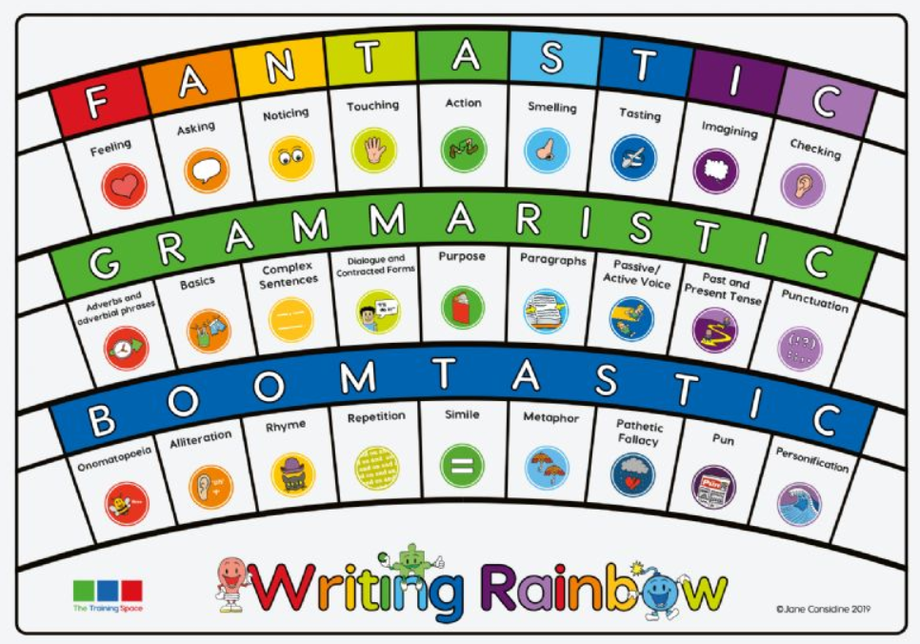Writing
EYFS
Learning to write in EYFS at Blofield is closely linked with the Little Wandle phonics program and based on the Early Learning Goals for writing, which come from both literacy and physical development. These elements are:
- To write recognisable letters, most of which are correctly formed
- To spell words by identifying sounds in them and representing the sounds with a letter or letters
- To write simple phrases and sentences that can be read by others
Our Reception children have words and writing modelled for them daily and write daily on white boards during their phonics sessions. Writing is always available through continuous provision where children have a range of resources to support and encourage them to write. Books of different genres play a huge role in inspiring our children and giving them reasons to write. They have lots of opportunities for oral practice and rehearsal which is essential for the compositional element of their writing. All our children’s independent writing is celebrated so children appreciate the value and importance of writing as a part of daily life.
Key Stage 1 and Key Stage 2
In KS1 and KS2, Blofield Primary’s approach to writing is with support from Jane Considine’s methods, taken from her book, “The Write Stuff”.
Fiction and non-fiction units are chosen across genres to link with topics being taught in each year group. As part of units, children take part in ‘experience days’ which can involve drama, visits and investigations to enhance the children’s vocabulary and knowledge about their particular writing focus. Writing units are chosen to fit in with year group topics and help reinforce learning in subjects across the whole curriculum. Children follow a method called ‘sentence stacking’. Sentence stacking refers to the fact that sentences are grouped together chronologically or organisationally to engage children with short, intensive moments of learning that they can apply immediately to their writing. Children learn to sentence stack, focusing on the style, genre and impact of words and sentences. Three sentences are chosen daily to go on the 'Sentence Stack' wall in each classroom, to celebrate the children's work and to show how the piece of writing is being 'built' as the unit progresses.
An individual lesson is based on a sentence model, broken into three separate chunks:
Initiate section – a stimulus to capture the children’s imagination and set up a sentence. The children brainstorm vocabulary and ideas.
Model section – the teacher models a sentence that outlines clear writing features and techniques.
Enable section – the children write their sentence following the model and have the opportunity to 'deepen the moment' where they can explore the plot point further and demonstrate their own creative sentences using their previous learning.
The Three Zones of Writing: The FANTASTICs (Ideas), The GRAMMARISTICs (Tools), and The BOOMTASTICs (Techniques) support their learning, precision and writing.

The FANTASTICs offer nine lenses that structure ideas and target children’s thinking. This supports children in developing variety in their writing by focussing on the vocabulary used, initiating ideas, provoking thoughts and igniting imaginations.
The 9 GRAMMARISTICs cover national curriculum requirements, capturing the broad spectrum of key grammar knowledge. Discrete grammar lessons are also taught to ensure specific grammar knowledge is taught and revisited.
The BOOMTASTICs focus on the art of writing, using a range of literary devices and techniques to make careful choices, playing with language to add flair to our writing and achieve various intentional impacts on our reader; painting vivid pictures through our word choices.
Examples of this way of teaching are available on YouTube. (eg. https://youtu.be/6E-rduR1KJ8 )
Children at Blofield are encouraged to see writing as a journey; re-drafting and editing skills are specifically taught and are used during the children's 'independent write' at the end of each unit. Writing extends across the curriculum with children being given opportunities to write for a range of different purposes outside of the writing lesson.
